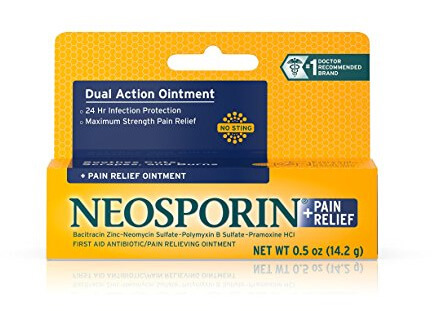When chaos runs its gamut, why do you think having survival antibiotics in your bugout plan is a must? Microorganisms. They are unseen by the naked eye. What could have been a small open wound or a stomachache can easily turn into something deadly when not immediately treated. Preppers and survivalist alike often overlook this critical aspect when preparing for their bugout plan. Some may even see them as insignificant until they are embroiled in a life or death situation.

Source : evidencenetwork.ca
To complete your checklist, here are 5 survival antibiotics that every prepper and survivalist should never be without.
1. Ciprofloxacin. Called a quinolone antibiotic is quite potent in fighting bacteria such as salmonella, pseudomonas, shigella, neisseria, and campylobacter. This is usually prescribed for 7 to 10 days as treatment for UTI, GI system infections, respiratory tract infections, STDs, and bone or joint infections. It can also be taken when suffering from diarrhea. Azithromycin can substitute for ciproloxacin when not available or when allergies occur.
2. Cephalexin. This cephalosporin antibiotic is also known to be potent in getting rid of bacterial infections. It is known to be a favorite prescription medication for pneumonia, bronchitis, strep throat and other respiratory infections. It can also be used for middle ear infections and urinary tract infections. Of all the survival antibiotics, this one is proven safe for pregnant women and children.
3. Doxycycline. A perfect substitute for erythromycin, doxycycline treats both bacteria and protozoal infection of the body. It is prescribed for bacterial pneumonia, STDs, malaria, cholera, and other diseases. When taking doxycycline, its important to read the label as different brands have specific instructions on whether to be taken with food or not. This, however, is a no-no to pregnant women and young children for its drastic side effects to fetal development. It can also cause teeth problems when taken at a young age.
4. Metronidazole. Used to treat a wide variety of infections from certain types of anaerobic bacteria and protozoa, it is often prescribed for colitis, diverticulitis, meningitis, joint or bone infections, abscesses, and various infections in the gums, stomach, and intestines. When taking metronidazole, do so with a meal or snack and plenty of water. Like other antibiotics, it must be taken on a full course.
5. Neosporin. Cutting a finger or toe, burning one’s arm or hand, getting scraped on the knees– all these may sound like minor injuries. When infected, however, these seemingly insignificant wounds can be deadly. As first aid, having a neosporin pack in your bugout kit will help hasten wound healing and prevent germs and microorganisms from seeping into the open area. Neosporin also helps protect infection from burns and abrasions. Here’s a great antibacterial and pain relief Neosporin ointment to add to your survival antibiotics checklist.
Where to Buy?
Most oral antibiotics must be prescribed by a certified physician and taken on a full course. Most pharmacies, whether online or brick-or-mortar ones, require prescription before dispensing.
Proper Storage
Bearing an unstable chemical structure, antibiotics of all kinds require more stringent storage mechanism to ensure safety. Antibiotics, particularly suspension and liquid varieties, must be kept refrigerated once opened. Pharmaceutical experts highly recommend storing it within 4-deg Celsius. During disasters or when electricity is out, keeping them cool inside ice cooler may also help stabilize its chemical component.
Many oral antibiotic tablets, caplets and capsules, however, can remain stable in 3 to 6 months when stored in cool dry place. Make sure to keep them in a sealed box or medicine kit to prevent being exposed to ants and other infestations. Many of these are also known to be photosensitive. So take time to ensure storage in cool dry place and away from direct or indirect sunlight.
A Gentle But Firm Reminder
Without a doubt, survival antibiotics is a must-have on your bugout checklist. These medicinal items, however, must be taken only when prescribed or in time of emergency. Keep in mind that antibiotics do not fight viral infections like coughs and colds or the dreaded flu. When taken without proper precaution, it may even do more harm than good. One indication of an infection is high fever.
When calamities strike and you have an open wound or feeling under the weather accompanied with high fever, taking the right antibiotics can be a life saver. Do take note that when taken, always do the full course to ensure complete recovery.




Leave a Reply
You must be logged in to post a comment.